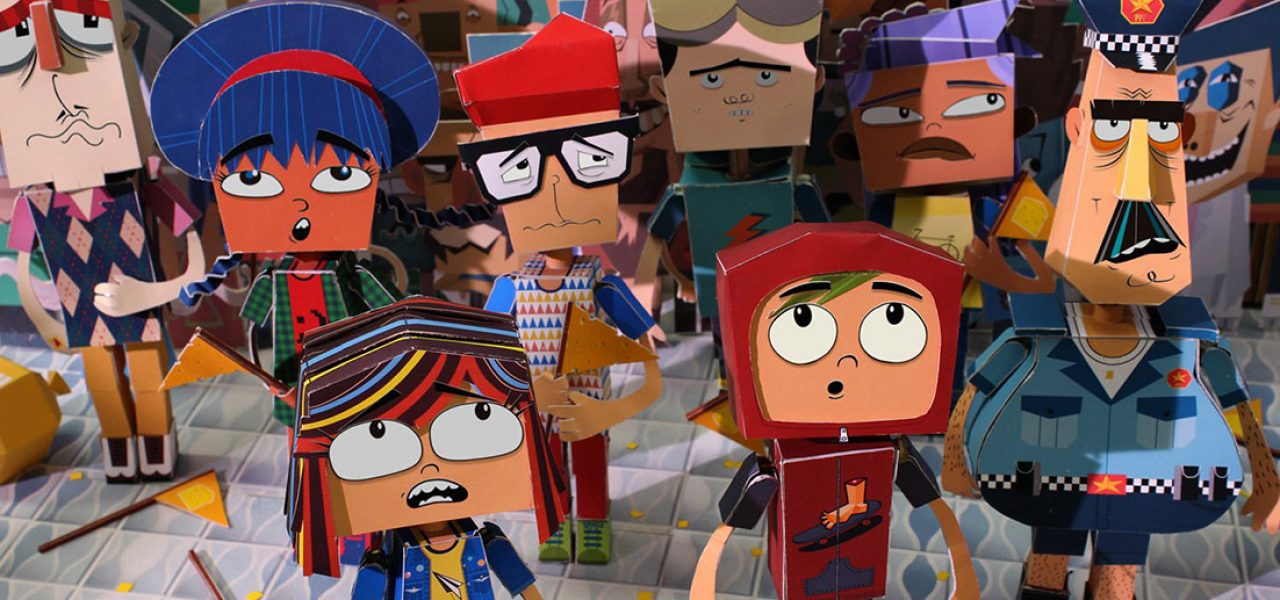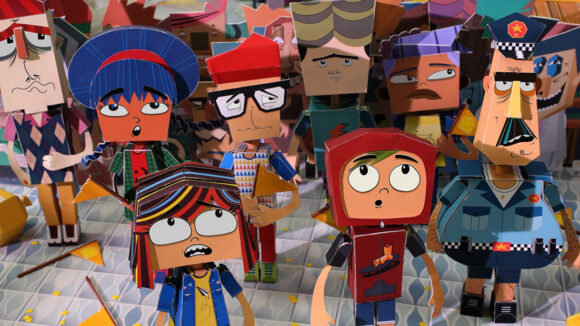

For Latin American Creators, It’s About Telling Stories That Matter To Them
The Quirino Awards were launched last year to honor animation from Latin America, as well as Spain and Portugal. But this year’s edition (April 4-6), which was held on the Spanish island of Tenerife, was also a showcase for Latin American storytelling. After two days of screenings, roundtables and awards, it was clear that the region’s flourishing animation sector is trying hard – and succeeding – to present itself as more than just a vast service industry.
Underpinning all awards ceremonies is an appreciation for distinctive creative visions, and this year’s nominated works had individuality in spades. More than that, many espoused subjects and themes particular to their countries, without sacrificing the broad appeal that Latin American animation will need in order to keep growing.
Take the two series that won Quirinos: Jorel’s Brother and Paper Port, which are made in Brazil and Chile respectively. On the face of it, these are accomplished kids’ shows, full of warm sentiments and kooky humor – qualities that have netted them sales across Latin America and abroad. But the nominated episodes also slip in references to their countries’ recent militarist pasts. In Jorel’s Brother, the protagonist’s father has a flashback to dark days when “the clowns had the power.”
Meanwhile, a plotline about a missing adventurer in Paper Port obliquely references the “disappearings” of dissidents carried out during Pinochet’s dictatorship. This period of history also informed Bear Story, the animated short that won Chile an Oscar in 2016. “The episode is about closure,” Alvaro Ceppi, Paper Port’s director, told Cartoon Brew. “It’s an emotional state linked to the history of my country, of Latin America. Why not take that emotion and turn it into a narrative?”
The feature films that contended at the Quirinos also strike a balance between the local and the universal. Virus Tropical, which was named best feature, is a gentle tale of a girl’s coming of age in Ecuador and Colombia. The film sidelines grand political narratives, focusing on the protagonist’s defining experiences of youth – but nor does it ignore the quirks of life in these countries: Colombian children’s mockery of Ecuadorian accents, say, or the complex dynamic between a middle-class family and its maid. “We have lots of shows like Narcos, about drugs and so on,” said director Santiago Caicedo. “We wanted to show another side to our society.”
Politics come to the fore in Tito and the Birds, a kid-oriented feature from Brazil in which a Trumpian president stokes and exploits the population’s fears. “You feel this fear in Brazilian cities, like when you close your window at a traffic light. And the media help spread it,” said co-director Gabriel Bitar. “But people in other countries can relate this fear to different problems, like terrorism.” (Just as Bitar spoke these words, an explosion outside the building made us jump; it turned out to be part of a movie shoot.) The film also evokes Brazil’s divided ethnicities and classes. A child from a poor background – one of the country’s “voiceless” – is literally unable to speak.
Another notable Brazilian work is Nara Normande’s Guaxuma, which picked up the Quirino for best short film. Normande deftly weaves reminiscences about a childhood friendship into an intimate portrait of the beach of the title, on which she grew up. The film was partly funded by the state of Pernambuco, which is home to Guaxuma. I asked Normande whether the funds came with conditions concerning the story. “In Brazil, there’s always a bit of that,” she replied. “Why do you want to make a film here, to talk about our culture?… I didn’t think about that at all. The story came from my head.”
While her upbringing supplied her with a narrative, Normande went abroad to find the materials for the animation. “I was telling the story of this beach, so I wanted to tell it with sand… But there were no 2d sand animators in Brazil.” Eventually, French studio Les Valseurs joined as co-producers. Once French money was involved, did she adapt the story to suit international audiences? “Not at all.”
Between them, these films have played and won at festivals like Annecy, SXSW, and Berlin, earning their countries prestige on the art house circuit. Yet while some Latin American animators reap the benefits of global attention, others look closer to home. Latin America is in itself a huge market, bound together by common histories and traditions. Brazil aside, the region also has the advantage of speaking a common language: its films are recorded in “neutral Spanish,” a standardized form of the language intelligible to all (if spoken by none).
There are vivid examples of this. The Peruvian film Condorito: The Movie is based on a comic strip beloved across South America. Its creators settled on their subject after conducting a continent-wide survey of beloved fictional characters, in which the cartoon bird came near the top. On a far smaller scale, animators from six countries banded together to create a two-minute tribute to mate, a herbal infusion drunk across the region.
Cultural ties can express themselves in more nebulous ways, too. Paul Vaca, a veteran producer from Ecuador, draws boundaries within Latin America. “The Andean countries share the same issues as societies,” he told Cartoon Brew. “Our narratives also share this way to approaching life: how we eat food, how we talk, how we relate with our families. Countries in the south of our continent have a culture driven by immigration in the late 19th and early 20th centuries.”
Vaca added that Mexico has an ancient heritage, much like the Andean countries do – which makes the two territories good candidates for collaboration. “We feel warmth from the Mexicans. We don’t have to aspire to work in London or Canada.” He cited Ram Pam Dam, a series which the Ecuadorian Gino Baldeón successfully pitched to Mexico’s Anima studio.
Nor do these cultural continuities stop at the borders of Latin America. The U.S. is home to a large Hispanic population which goes to the cinema disproportionately often. Latin American films can do well in this market – without even being dubbed into English. A case in point: Un Gallo con Muchos Huevos, a Mexican comedy that grew out of a viral web series called Huevocartoon. José Iñesta, director of Mexico’s Pixelatl conference, identifies a special regional appeal in such comedies: “In Mexico, we have intrinsic stories and a particular humor, like Huevocartoon. I don’t even think that a Spaniard would understand.”
By appealing to audiences in neighboring countries, productions also lay the groundwork for international co-productions, which bring extra money and security. While much improved in recent years, funding in the region remains low and unpredictable, hampering the spread of bold, singular Latin American series and films. The imperative to find partners abroad is making creators more aware of what other societies want, and more adept at pitching their ideas at international markets like Rio Content Market and Buenos Aires’ Animation! subsection at Ventana Sur.
“Latin America is full of very special projects, with their own voice,” said Silvina Cornillón, coordinator of Ventana Sur’s Animation! “But things are changing – they’re learning to make the stories more universal.” The process isn’t always straightforward: Cornillón told me about a project conceived in one Latin American country, which stars a little devil. The character had to be reimagined when its creators realized that it wouldn’t play well in certain other Latin American countries, where religious norms differ.
For the time being, events like the Quirinos confirm that the talent is there. Animation has the potential to travel well, both within Latin America and beyond, and filmmakers across the region are embracing the opportunity to project a unique identity abroad. Alongside technical competence, originality is becoming a key measure of success. As Paper Port’s Alvaro Ceppi put it, “Why make a version of a show that already exists?”

.png)